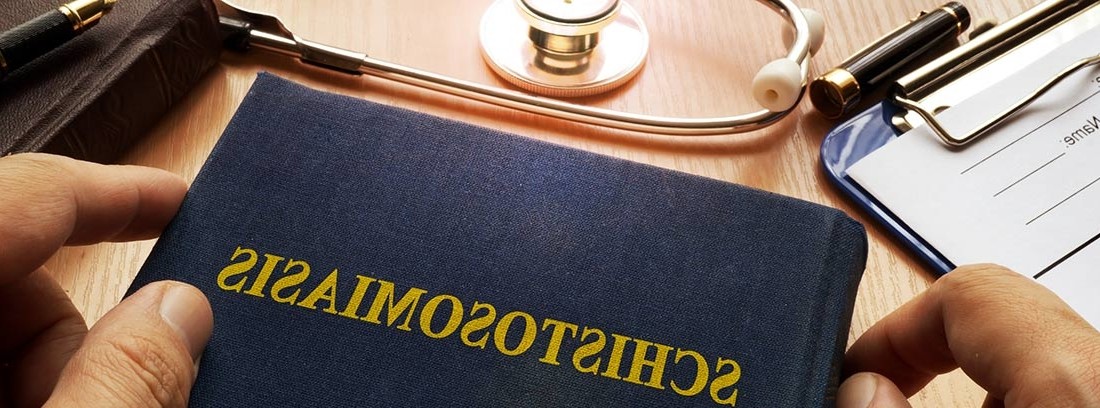What is bilharziasis or schistosomiasis?

Bilharziasis or schistosomiasis is a group of parasitic infections, acute and chronic that are caused by a worm of the genus Schistosoma. All of these infections are caused by the contact with larvae (cercarías), released by freshwater snails, which swim in the fresh water of rivers and are able to penetrate the skin. Once in the inside the body, the larvae transform into adult schistosomes. These live in the blood vessels, where females lay their eggs. Some of these eggs leave the body with feces or urine and continue the life cycle of the parasite. Others get trapped in body tissues, causing an immune reaction and progressive damage to affected organs. There are 2 types the urogenital and intestinal schistosomiasis.
Schistosomiasis symptoms
The symptoms of bilharziasis are caused by the body's reaction to the presence of worm eggs. In the area of the skin where the larvae have penetrated, cercarial dermatitis. The most frequent symptoms are:
- Abdominal pain
- Diarrhea
- blood in stools
- blood in the urine.
- Itchy rash
- Fever
In the most severe and advanced cases it is associated with:
- Liver involvement (enlargement or hepatomegaly)
- Accumulation of fluid in the abdomen (ascites)
- Abnormal spleen growth (splenomegaly).
- Fibrosis of the bladder and ureters
- Kidney failure (rarely)
- Bladder cancer (rarely)
In women it can cause infertility and in children the appearance of a bladder pseudotumor has been described.
Sequelae in the body
The consequences of this infection are considerable, since it causes more disability what deaths. In children, for example, it can cause anemia, and learning or cognitive problems. The positive is that these problems are reversible with him. Although, months or years of parasitization, granulomatous reactions and fibrosis can occur in the affected organs.
How is it diagnosed?
The diagnosis is based on see parasite eggs in stool or urine. Helminth antibodies or worm antigens can also be determined in a
Can it be prevented?
The World Health Organization (WHO) advises a large-scale preventive treatment in the populations at risk which is based on access to drinking water, improvements to sanitation, hygiene education and snail control in fresh waters.
In areas where the risk of infection is high, the population is recommended to take a anthelmintic drug (praziquantel) periodically (in two single doses 12 hours apart).
- Dermatitis appears in the area of the skin where the larvae have penetrated, and after 48 hours, a very itchy rash and fever.
- The consequences of this infection are considerable (it causes more disability than deaths).
- Genital schistosomiasis is especially common in women who wash clothes in rivers with infested waters
- Children between the ages of 10 and 15 are the most affected population.
Pediatric Specialist
(Updated at Apr 14 / 2024)